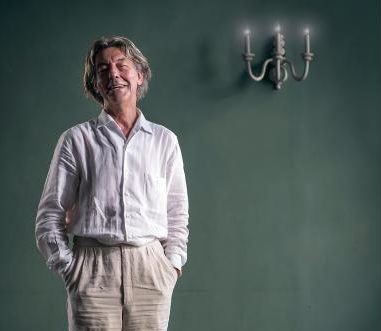
The German gallerist Michael Kewenig died on Sunday at the age of 68 on the Spanish island of Mallorca.
A trained lawyer, Kewenig worked as a bankruptcy administrator before co-founding Galerie Kewenig with his wife Jule in 1986.
At first, the dealer only intended to support his wife with financing the acquisition of a mansion on the outskirts of Cologne, which would house the gallery. “It was my wife who had the art background,” he told Die Welt in 2012, “I thought I’d help a little bit with the administration and then go back to working as a lawyer.”
However, inspired by a Mario Merz exhibition he had seen in Trento at the end of the ’80s, Kewenig turned his back on his legal career becoming gripped by the desire to fully participate in the running of the gallery. Together with Jule, Michael Kewenig shaped a program of heavyweight postwar figures from the Arte Povera movement and conceptual art, including artists such as Merz, Christian Boltanski, Marcel Broodthaers, James Lee Byars, and Jannis Kounellis.
The gallery now also represents names like Ghada Amer, Ilya and Emilia Kabakov, Nan Goldin, Sean Scully, Pedro Cabrita Reis, William Kentridge, and Kimsooja, whose show opens during Berlin Gallery Weekend next week.
Galerie Kewenig’s Berlin space. Photo: Galerie Kewenig.
The Kewenigs ran the gallery in Cologne for almost three decades. In 2004 they inaugurated a second space in a 13th-century chapel in Palma de Mallorca, on the Spanish Balearic Islands, and in 2013, after more than 25 years in the Rhineland, the gallery closed its space in Cologne and moved into a historic Baroque-era townhouse in Berlin.
Throughout his career, Michael Kewenig cultivated a reputation as an exacting aesthete who went to great lengths to offer his artists the best possible conditions for the presentation of their work.
He is survived by his wife Jule who will continue to manage the gallery in Spain, and his son Justus, who will take over the direction of the Berlin gallery.